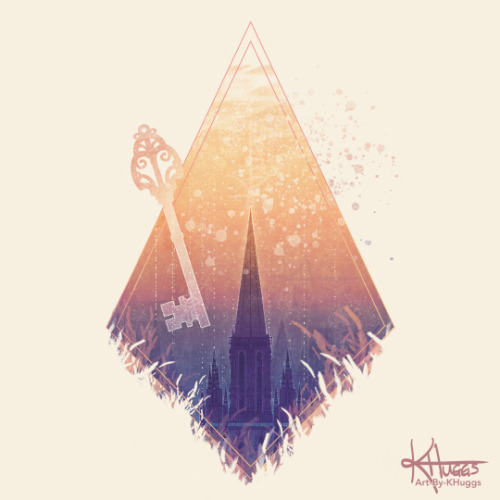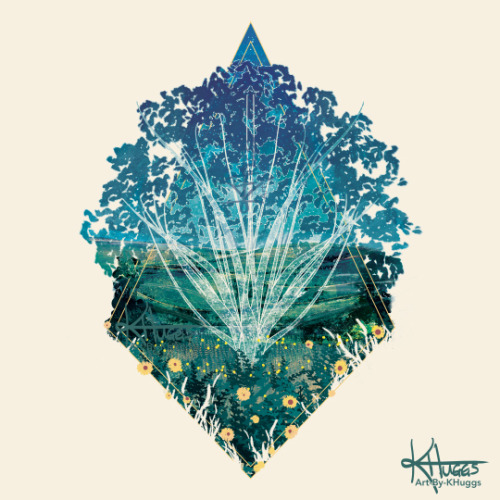#folktale
Very excited to post the first look at my author illustrated book, ‘Margaret’s Unicorn’ published by the absolutely wonderful Schwartz and Wade Books! @randomhousekids
Read a little more here: http://bit.ly/2UDARiv
Publishing this year on the 15th September in the US!
‘Margaret’s Unicorn’ is a tale about a little girl who is sad to move home, but one day finds a baby unicorn, trapped and tangled in the weeds, left behind accidentally by his family for the winter. She takes him home to take care of him through the colder months, showing him how magical winter can be, and learning to love her new home herself.
Post link

“See me sing,
See me grim.
A big bad wolf I am
In a world I made so dim.”
-
Ive been inactive alot, heres a quick drawing I made from school with my phone cause Math subject sucks.
I also made a deviantart acc.
KakaPHD is the name.





I just reblogged sweet @ferronickel ’s awesome version of my unicorn lineart, but I never actually posted my finished version over here since I wasn’t tumbling at the time. So please enjoy my sad goth unicorn.
MAIDEN | 2020
Rain Making In Japanese Buddhism
Surprisingly, early records of rain making are mostly conducted by Buddhist monks rather than Shintō priests/priestesses. In “Tōdaiji-gusho” [東大寺具書] (Nara Period?), the very first Buddhist monk who performed rain dance was a monk from the Kingdom of Koryŏ [高麗/고려] by the name of Ekan [慧灌] (Asuka Period) who is the founder of Sanron Buddhist Sect [三論宗] in Japan¹. While his stay in Hōkō Temple [法興寺] (today’s Asuka Temple [飛鳥寺] (below) in Asuka Village [明日香村], Takaichi Dist. [高市郡], Nara Period) during the reign of Emperor Kōtoku [孝徳天皇], a series of draught struck Japan. This was when Ekan performed a rain making ritual as he recited verses from Sanron scriptures while wearing a blue dress which successfully brought rain.

Another less successful attempt was recorded from year 642 via “Nihon-shoki” when Empress Kyōgoku [皇極天皇] (594-661) instructed nobleman Soga-no-Emishi [蘇我 蝦夷] (586?-645) to conduct a rain making ritual on July 25th as he recited verses from Māhayāna Buddhist scriptures, but was instructed to desist after four days for the rain he managed to summon were mere drizzles and proper rain came only when the Empress prayed herself.
There’s also a legend² when two monks battled over who could bring down rain. In 1261, Shingon Buddhist Sect [真言律宗] monk Ninshō [忍性] (1217-1303) (below left) of Gokuraku Temple [極楽寺] (Kamakura City [鎌倉市], Kanagawa Prefecture) and another monk called Nichiren [日蓮] (below right) (1222-1282) who later founded Hokke Buddhist Sect [法華宗] fought each other to prove who’s teachings were superior. When Ninshō called upon the rain, it ended up summoning a tempest and failed, but delicate rain came down from the sky when Nichiren did the same; resulting to Nichiren taking the W.


Based upon these accounts, rain making became an integral part of Japanese Buddhist practice such as the manual for rain making together with drums and strawhats used in the ritual stored in Shindaibutsu Temple [新大仏寺] (Iga City [伊賀市], Mie Prefecture).
新大仏寺雨乞い関係文書 附 雨乞い踊り用具 文化遺産オンライン
This is especially true for Jōdoshin Buddhists [浄土真宗] with their Nenbutsu-odori [念仏踊] which is a Buddhist choreography of rain making practiced even to this day such as the famous Taki-no-miya-nenbutsu-odori [滝宮の念仏踊] performed in Ayagawa Town [綾川町] (Ayauta Dist. [綾歌郡], Kagawa Prefecture).
Sources:
Folktale Week 2019
I participated in “Folktale Week” over on Instagram for the first time this year and had a blast!
6. Key - In French folklore, the sunken city of Ys lies just off the coast of Brittany. The city was protected from the sea by a series of dikes, with a gate that could be opened at low tide to allow boats into the city. The single key for the gate was kept by the king. One night, the princess stoles the key while trying to sneak her lover into the city. In the process, she accidentally caused the city to flood and sink into the sea. The king was the only survivor, thanks to a saint’s intervention. There are rumors that the city will rise again someday and that the first person to see it, and hear the church bells ring, will be the ruler of the risen city.
Post link
Folktale Week 2019
I participated in “Folktale Week” over on Instagram for the first time this year and had a blast!
5. Darkness - Folklore from many cultures include an explanation for the Northern Lights that appear in the dark of winter. My favorite comes from Finland, where the Northern Lights are known as Revontulet, “Fox Fires.” The elusive Firefox, while running through the dark landscape, generates sparks against the trees, which creates the Northern Lights. In another version of the tale, the running Firefox kicks up snow that reflects light as it hangs in the frozen air.
Post link
Folktale Week 2019
I participated in “Folktale Week” over on Instagram for the first time this year and had a blast!
4. Smoke - Around 1922, Lady Celia Congreve wrote a poem titled “Firewood Poem.” The poem gathered together a variety of folklore, and describes which types of wood are best for burning. Below is an excerpt from the poem:
“Poplar gives a bitter smoke,
Fills you eyes and makes you choke,
Apple wood will scent your room,
Pear wood smells like flowers in bloom.
Oaken logs, if dry and old,
Keep away the winter’s cold.
But Ash, wet or ash dry,
A king shall warm his slippers by.”
Post link
Folktale Week 2019
I participated in “Folktale Week” over on Instagram for the first time this year and had a blast!
3. Path - In Finnish, the Milky Way is known as Linnunrata, “The Bird Pathway.” During migration seasons, Finnish folklore says that the birds would follow the path of the stars to and from Lintukoto “Bird Home,” a warm paradise at the ede of the world. Mordern-day scientists have actually proven that birds due use the stars to navigate!
Post link
Folktale Week 2019
I participated in “Folktale Week” over on Instagram for the first time this year and had a blast!
2. Secret - According to Irish folklore, individuals who harbor a distressing secret can sometimes fall ill with Galar Rúnach (Malady of Secrets). In order to become well again, the individual can confide the secret to a willow tree, which holds the secret in it’s bark. This can backfire sometimes though, such in the tale “The King with Horse’s Ears.” In that tale, the willow that holds the secret to the king’s deformity is cut and used to make a harp that sings the truth aloud to a crowd.
Post link
Folktale Week 2019
I participated in “Folktale Week” over on Instagram for the first time this year and had a blast!
1. Home - In the Icelandic “Book of Settlements” (Landnámabók) sites for homes were sometimes selected by Norse settlers by putting their “High Seat Pillars” (Öndvegissúlur) into the sea as soon as Iceland was spotted on the horizon. Wherever these pillar came ashore marked the location where the new home should be built, with these pillars on either side of the seat at the head of the hall. According to the sagas, Reykjavik was founded using this method by Ingólfr Arnarson in 874 AD.
Post link




A bunch of drawings for Folktale Week 2020 ✨







